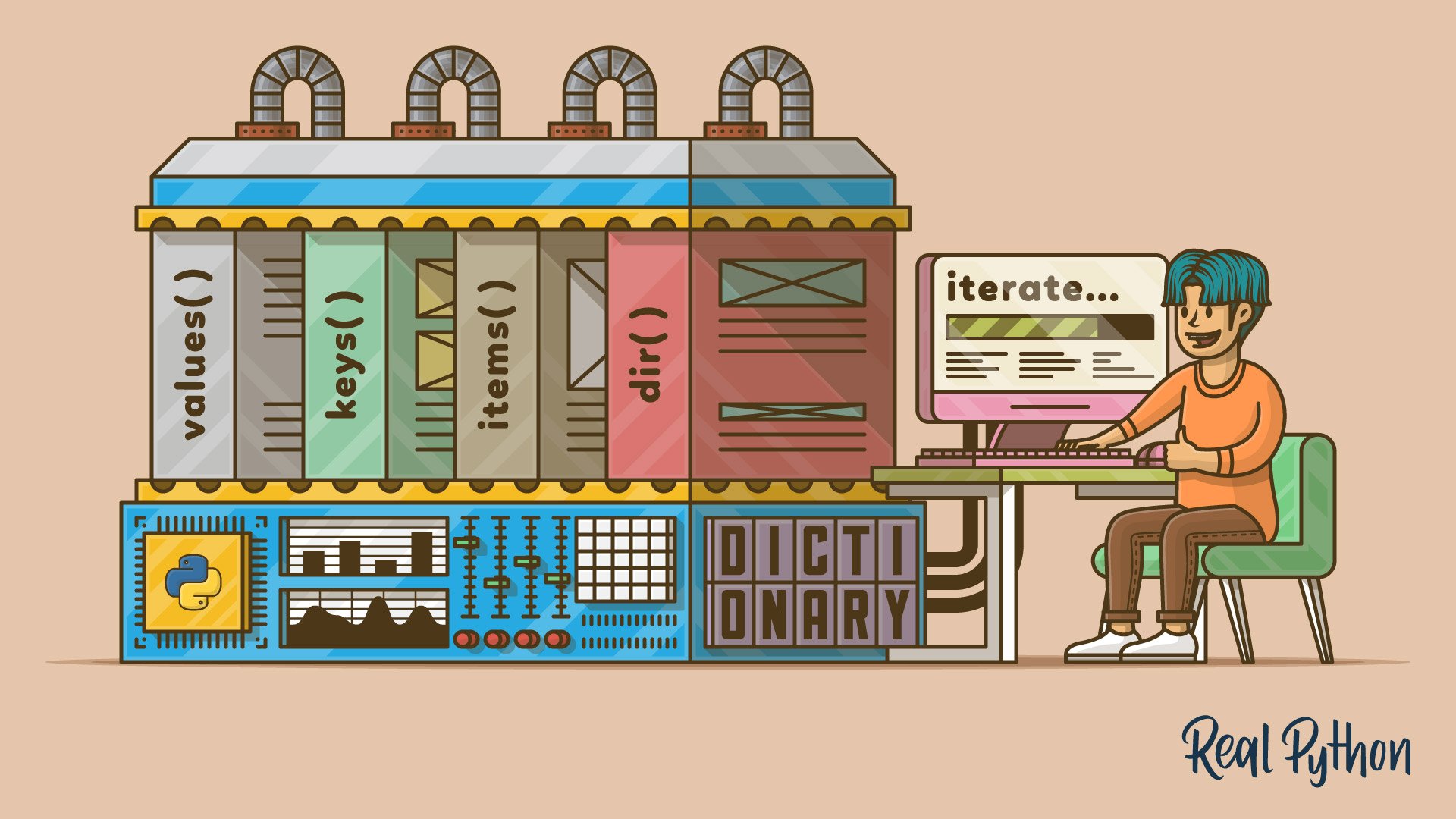Dictionaries are one of the most important and useful data structures in Python. They can help you solve a wide variety of programming problems. This course will take you on a deep dive into how to iterate through a dictionary in Python.
By the end of this course, you’ll know:
- What dictionaries are, as well as some of their main features and implementation details
- How to iterate through a dictionary in Python by using the basic tools the language offers
- What kind of real-world tasks you can perform by iterating through a dictionary in Python
- How to use some more advanced techniques and strategies to iterate through a dictionary in Python
For more information on dictionaries, you can check out the following resources:
- Dictionaries in Python
- Itertools in Python 3, By Example
- The documentation for
map()andfilter()
Ready? Let’s go!
Take the Quiz: Test your knowledge with our interactive “Python Dictionary Iteration” quiz. You’ll receive a score upon completion to help you track your learning progress:
Interactive Quiz
Python Dictionary IterationDictionaries are one of the most important and useful data structures in Python. Learning how to iterate through a Dictionary can help you solve a wide variety of programming problems in an efficient way. Test your understanding on how you can use them better!





solidgames on Dec. 27, 2019
Keys must be hashes which normally means they have to be “mutable”? Don’t you mean keys are normally “immutable”.